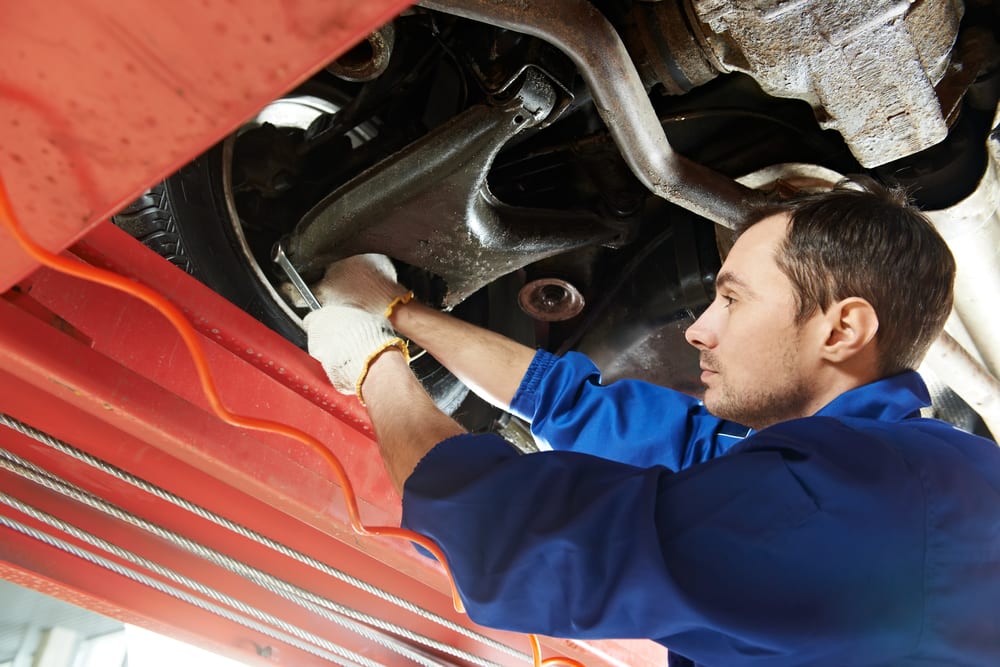

Every vehicle’s suspension — the collection of parts that supports it, cushions its load from bumps, and enables it to turn — represents a compromise by the designers. Automakers must consider numerous factors in design any vehicle’s suspension, including:
- Weight
- Cost
- Compactness
- Desired handling characteristics
- Desired ride comfort
- Expected load (passengers and cargo) — minimum and maximum
- Clearance, both under the center of the vehicle and in the front and rear
- Speed and aggressiveness with which the vehicle will be driven
- Robustness in accidents
- Maintenance frequency and cost
With all that in mind it’s a wonder that the automakers do as well as they do at balancing the various factors. The suspension of every modern car, truck, and SUV is designed to accommodate a range of different conditions and different expectations; none is perfect at everything and very few are perfect at anything. But for the most part drivers get what they expect: the Ferrari owner expects excellent performance in high-speed maneuvers at a cost in ride comfort, while the Rolls Royce owner typically expects, and gets, a supremely comfortable ride from a car that would be a handful on the racetrack.
These compromises are good enough for many people, but some drivers — and some manufacturers — don’t like to compromise if they don’t have to. That’s where adjustable suspensions come in. Some suspensions allow adjustment, whether by the driver or automatically by the car itself, to account for certain changes in conditions. In effect, a car with an adjustable suspension functions as two or more different slightly suspensions, depending on what’s needed.
Some new cars are sold with adjustable suspensions, while other adjustable setups are offered as “aftermarket” solutions, meaning the individual customer buys them and has them installed. But whether OEM (original equipment manufacturer — the carmaker) or aftermarket, today’s adjustable suspensions typically allow adjustment of one or more of the following parameters.
Ride height
Some higher-end cars can raise or lower their bodies as conditions dictate, often automatically. For example, the Tesla Model S automatically raises itself when entering driveways, to avoid scraping, and lowers itself at highway speeds to improve aerodynamics. And some SUVs can be set to a lower suspension height on smooth roads, for stability and economy, or higher when driving off road, for increased ground clearance. This setting can be partly automatic as in the Ford Expedition (which raises itself when the driver engages four wheel drive) or completely manual.
A variation on ride height adjustment is the “load-leveling” suspension, in which height is adjusted to compensate for heavy loads; usually, the load is located at the rear of the vehicle and the system responds by boosting the rear back up until the vehicle is level again.
Ride height adjustment is usually accomplished using air bags incorporated with the springs; changing the air pressure changes the amount of lift. Other manufacturers use hydraulic systems to accomplish the same thing, with pumps supplying hydraulic pressure to help lift the vehicle.
An extreme variation on ride height adjustment is the “air bag” aftermarket system that allows dramatic lowering and raising of the vehicle, sometimes even to the point of being able to bounce the car in the air. These systems are intended primarily for aesthetics, not ride or performance.
Ride stiffness
A few cars (the Mercedes S-Class is one) offer active suspensions that compensate for high-speed maneuvering by automatically stiffening the ride; they accomplish this task using a pneumatic (air) or hydraulic (fluid) reservoir with varying pressure. Ride stiffness adjustment is incorporated in aftermarket systems that feature adjustable spring rates and/or shock absorber performance. Generally these adjustments require getting under the car and manually changing something, most commonly a dial on the shock absorber that changes the shock’s tendency to damp movement; cockpit-adjustable systems, usually using air bladders, are less common.
Note that a “sport” suspension setting, meaning one that is stiffer than normal, should not be confused with a “sport” setting on an automatic transmission, which usually means shift points are set to somewhat higher engine speed than normal, improving acceleration while decreasing fuel economy.
Other suspension geometry
Vehicles intended for specialized applications sometimes allow even more adjustment, often by turning bolts or other fittings to change the basic geometry of the system, for example by moving the attachment points of the roll bars. Similarly, trucks and trailers that need to carry heavy loads sometimes offer variable spring geometry — moving the attachment points of the springs — to accommodate those loads.
Dedicated race cars go even further, allowing adjustment of almost every aspect of the suspension. A skilled race mechanic can adapt a race car to each individual track. To a lesser extent such systems can be used on road cars, though because adjustment usually requires tools and always requires the car to be stopped it can’t be used to adapt to immediate changes like such as higher speeds.
Adjustable height suspension is becoming more common as an offering from the factory, as concern about fuel economy grows. Most cars are more aerodynamic, which also means more fuel efficient, when they are lower. The other types of adjustable suspensions listed above are found primarily in aftermarket systems, particularly in adjustable shocks and “coilovers” (systems comprising a coil spring and an associated adjustable shock or strut). But in either case the intent is the same: incorporate an adjustment to help allow for different needs or conditions.



